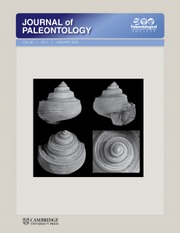Article contents
A new post-LOME (Late Ordovician Mass Extinction) recovery brachiopod fauna from South China
Published online by Cambridge University Press: 31 May 2024
Abstract
Following the Late Ordovician Mass Extinction event, brachiopod faunas were in a phase of recovery during the late Rhuddanian (early Silurian), documented by a drastic turnover of Ordovician-type to Silurian-type faunas. In this study, we present a recovery brachiopod fauna, from the Niuchang Formation (late Rhuddanian-based graptolite zonation) at the Wanzi section of Zhenxiong in northeastern Yunnan Province, South China. The fossils include 26 species assigned to 25 genera, with a dominance of strophomenides and orthides, but also a diverse suite of atrypides and pentamerides, which exhibit compositional differences compared to the earlier Edgewood–Cathay fauna. The emergence of a more typical Silurian brachiopod fauna suggests a delayed community turnover after the Late Ordovician Mass Extinction event. The shallowing marine environment trend evinced in the brachiopod assemblages in the section indicates a balance between the global transgression and the regional Qianzhong Uplift, which provided a stable environment for the brachiopod recovery. The presence of diverse pentamerides, including the earliest species of the large-shelled genus Sinostricklandiella, suggests early diversification of this clade in South China.
- Type
- Articles
- Information
- Copyright
- Copyright © The Author(s), 2024. Published by Cambridge University Press on behalf of Paleontological Society
References
- 1
- Cited by



